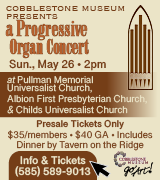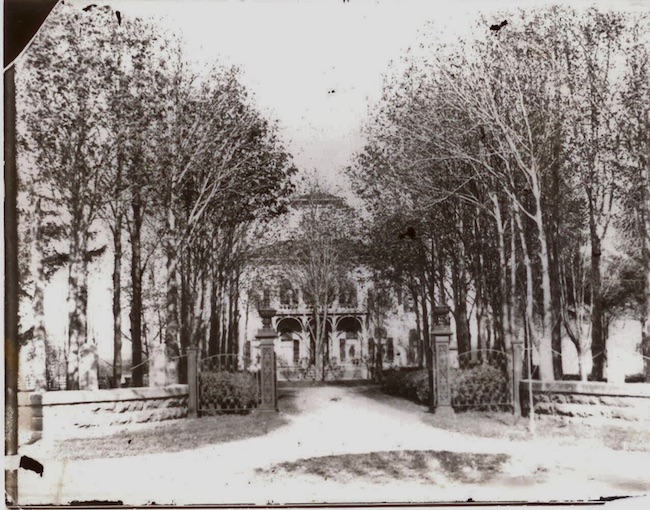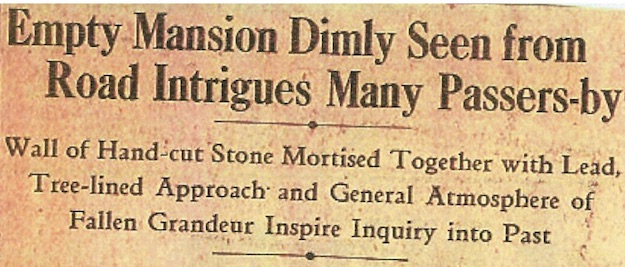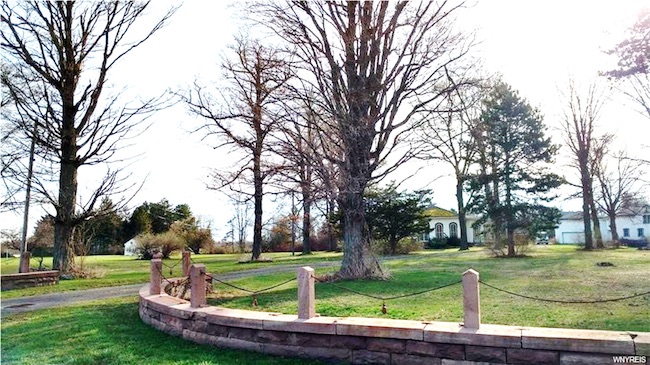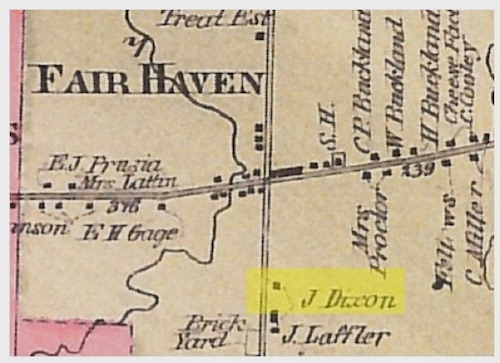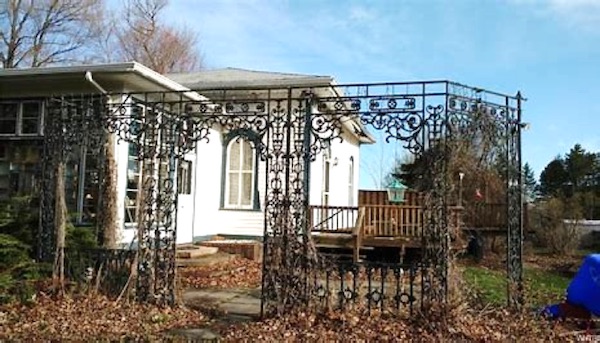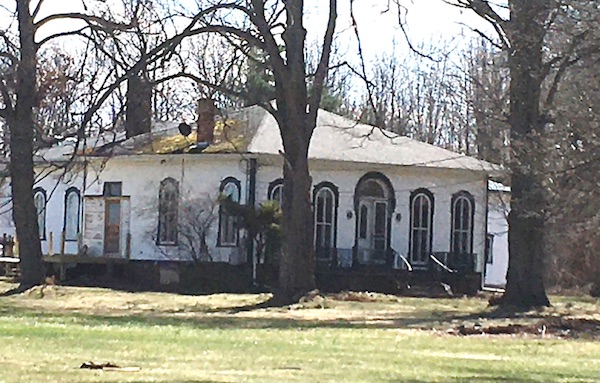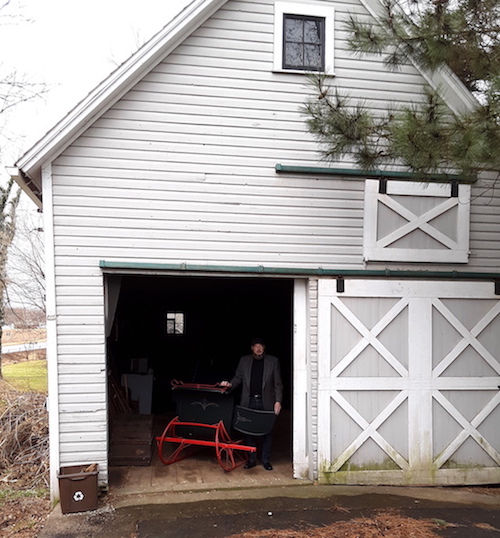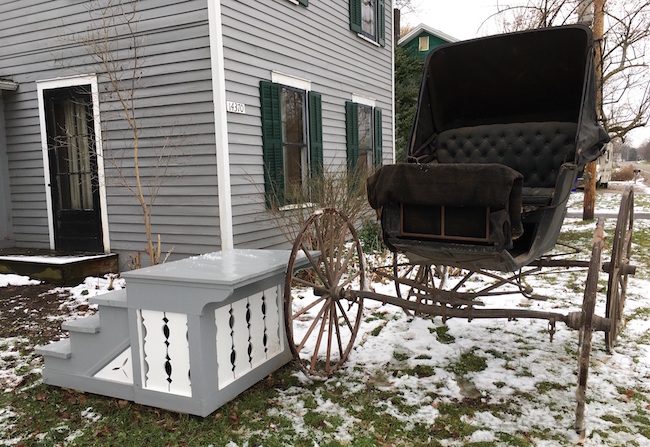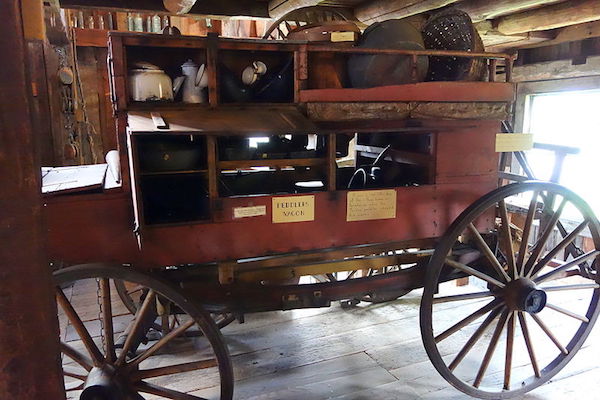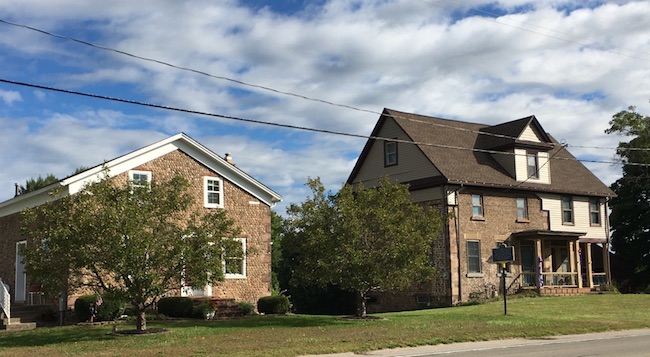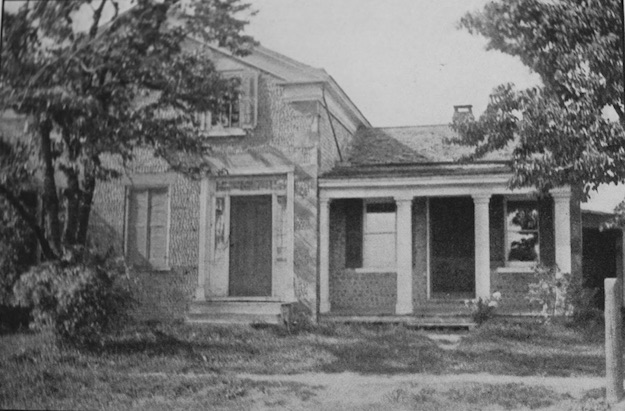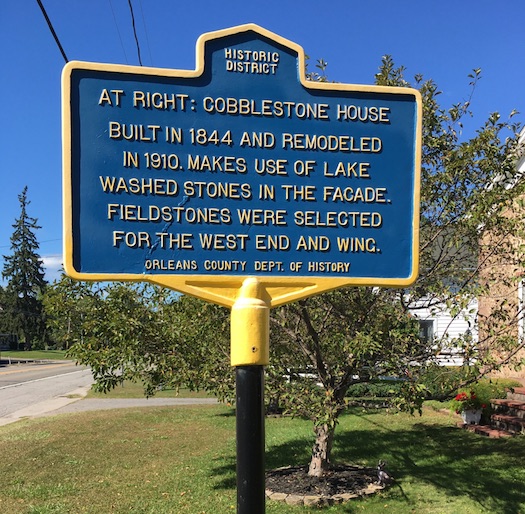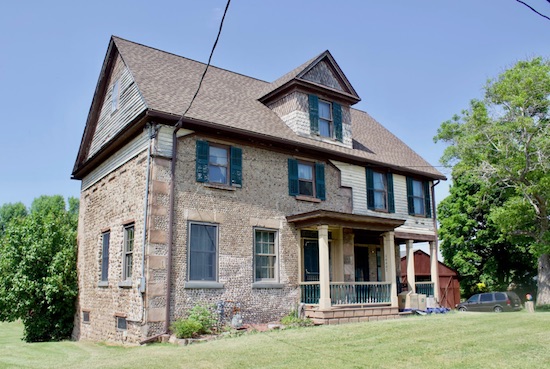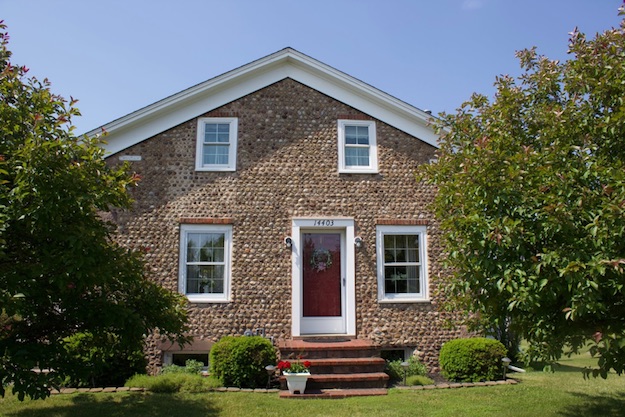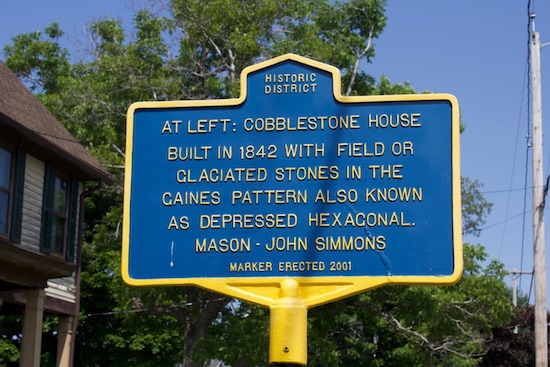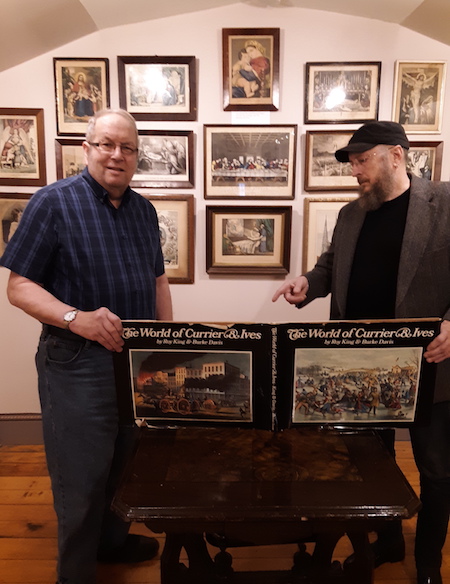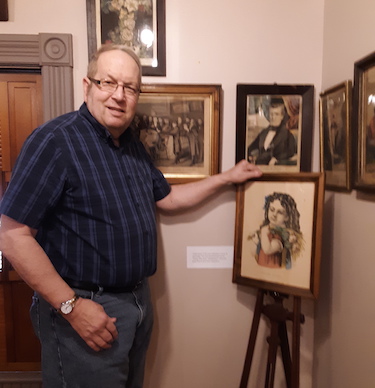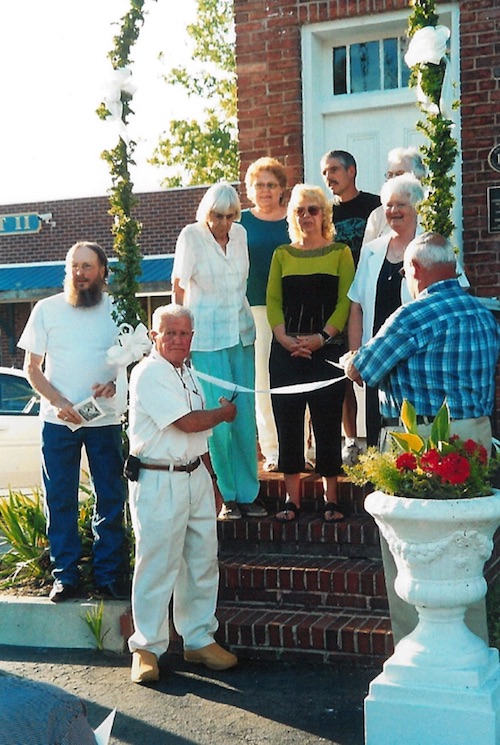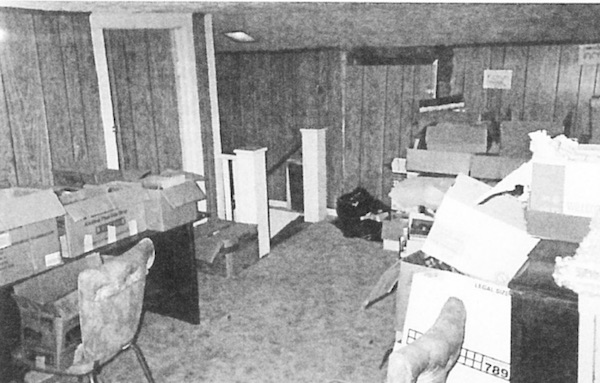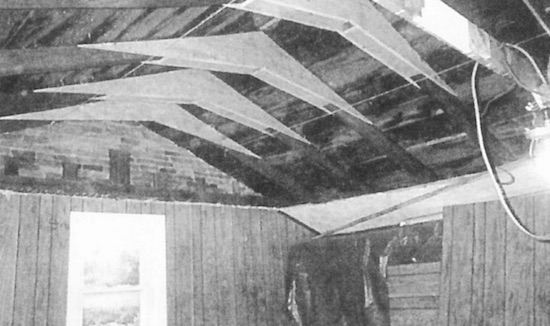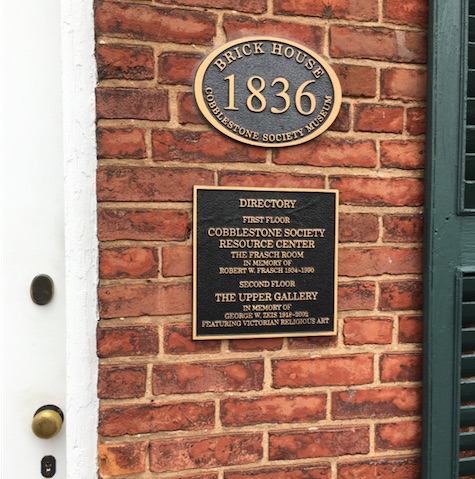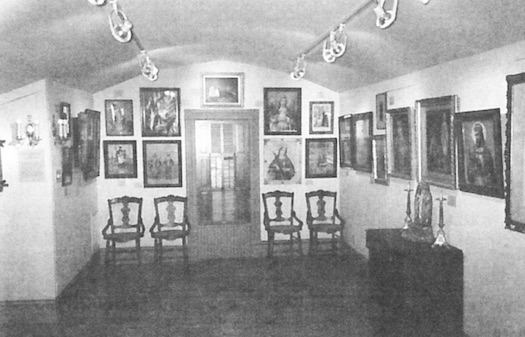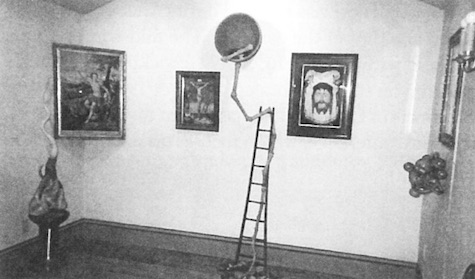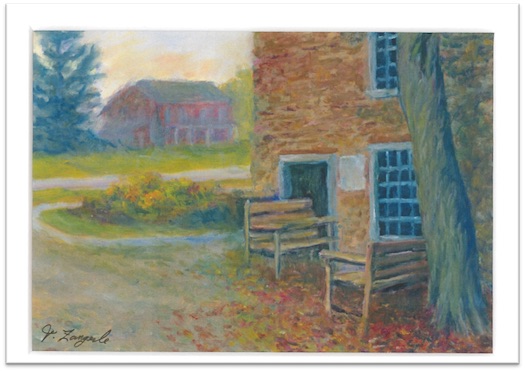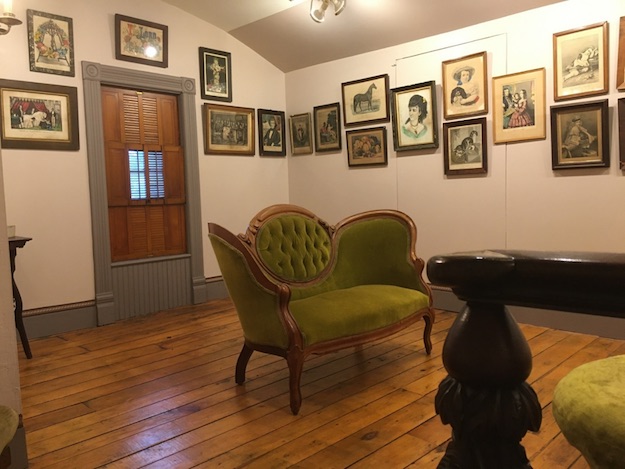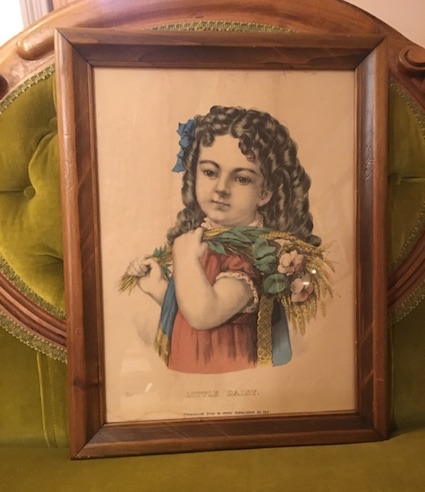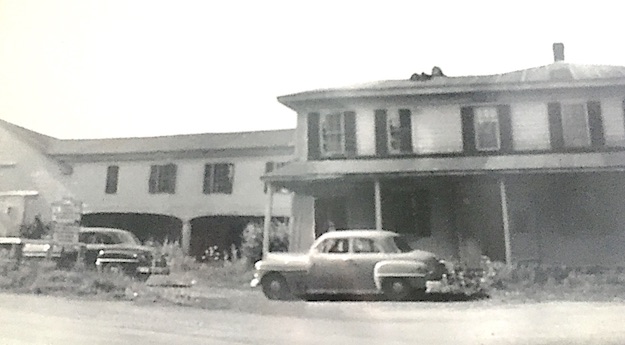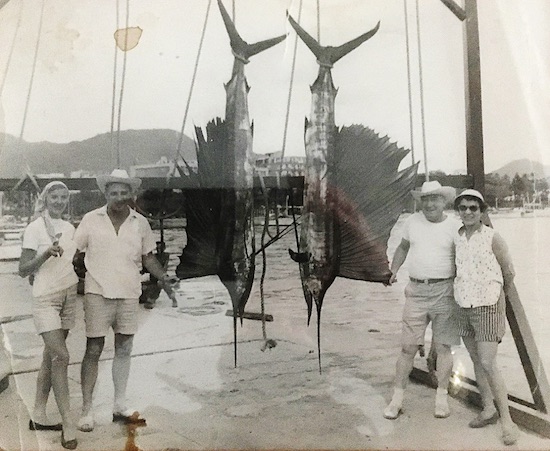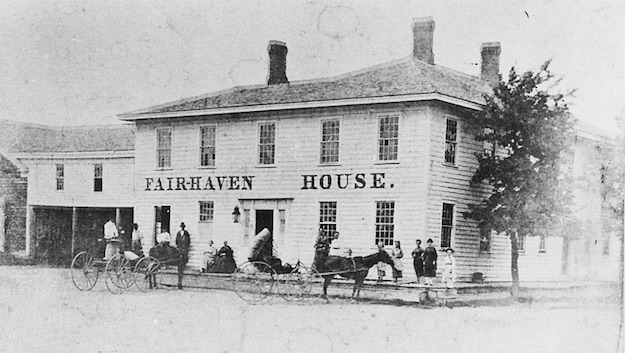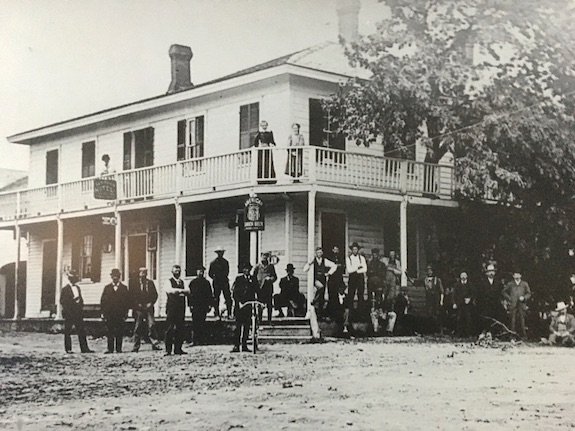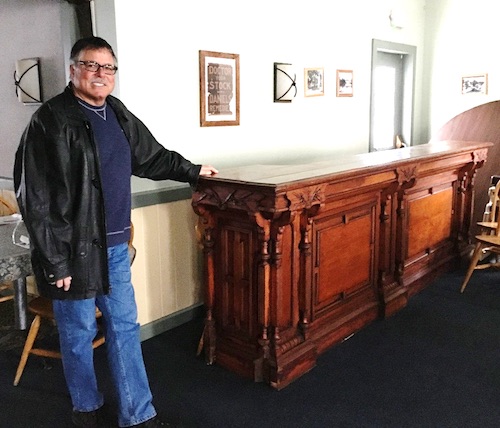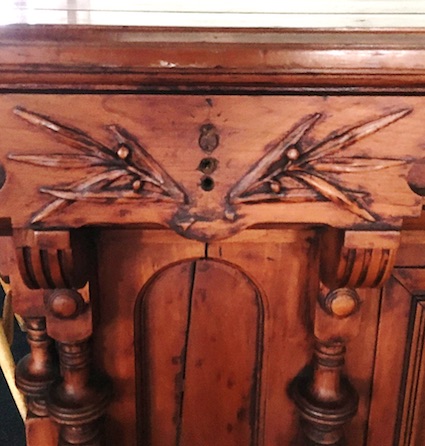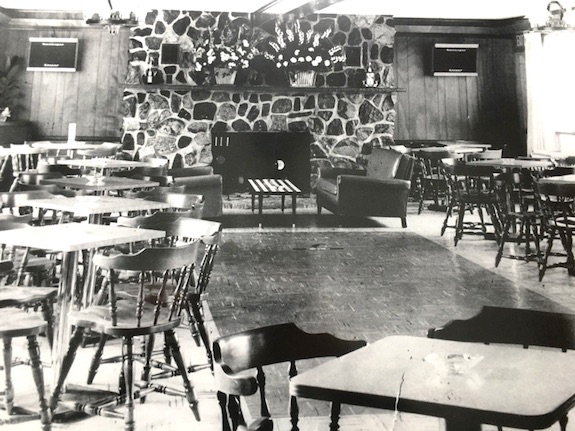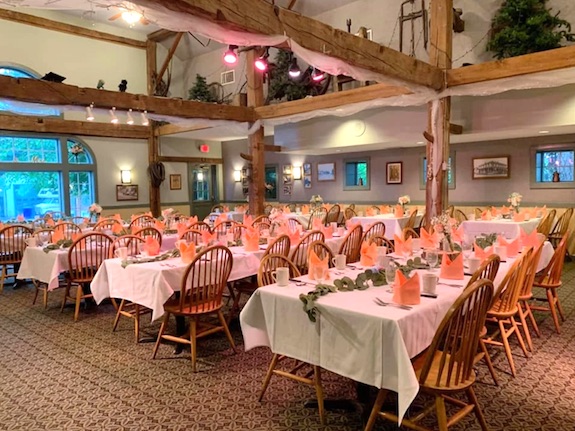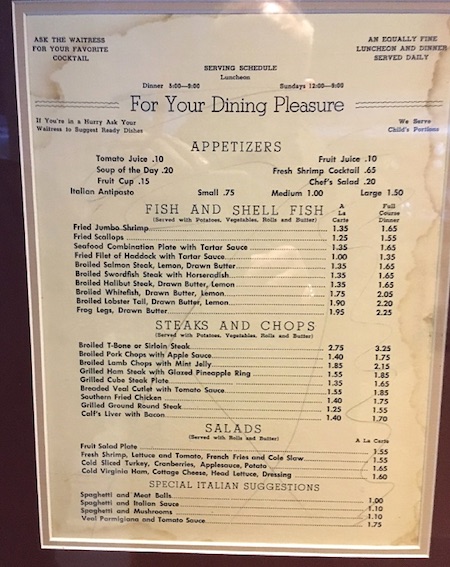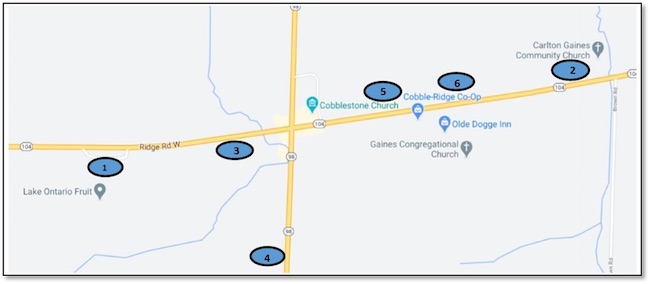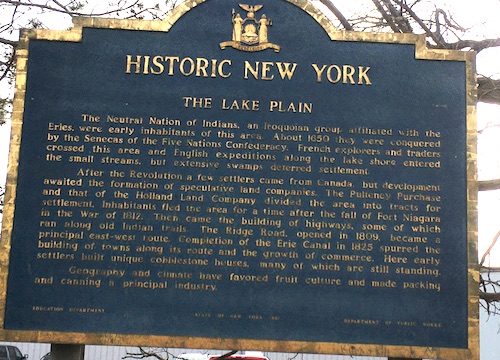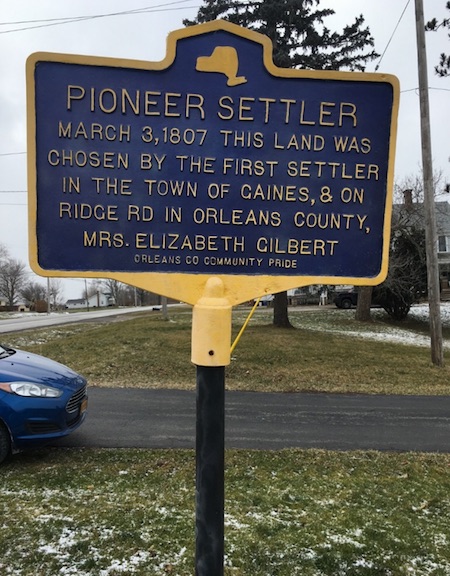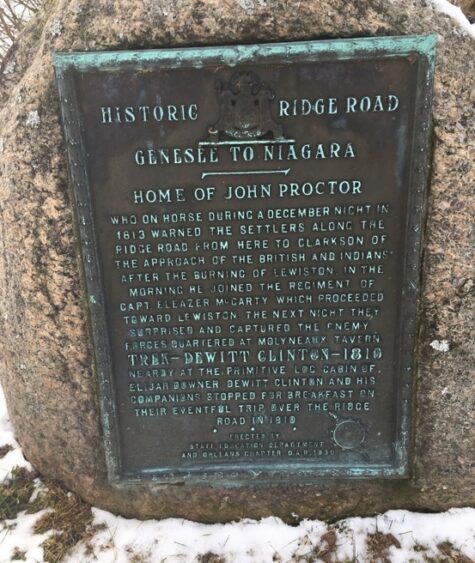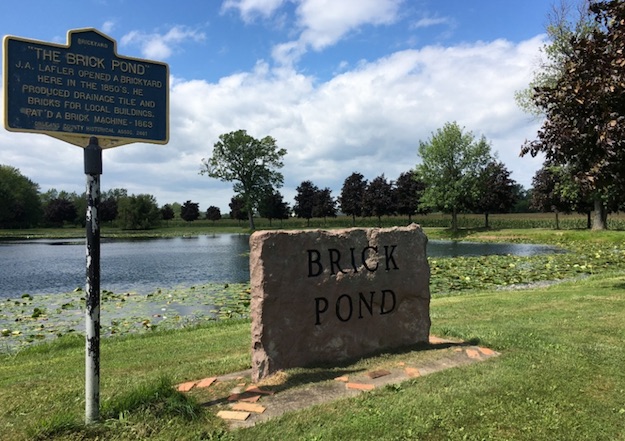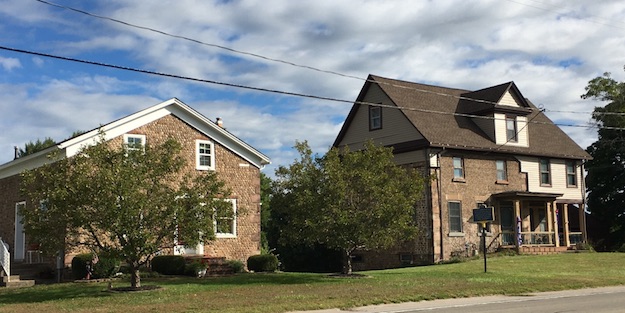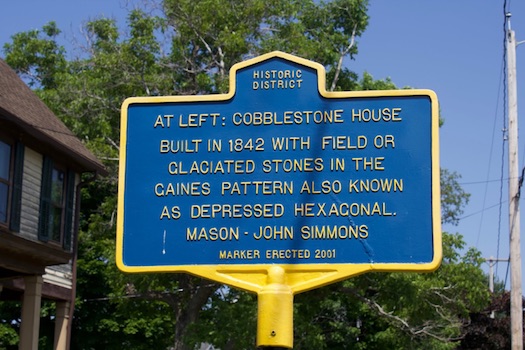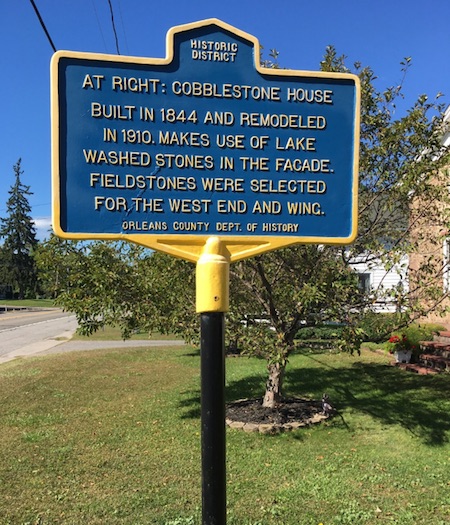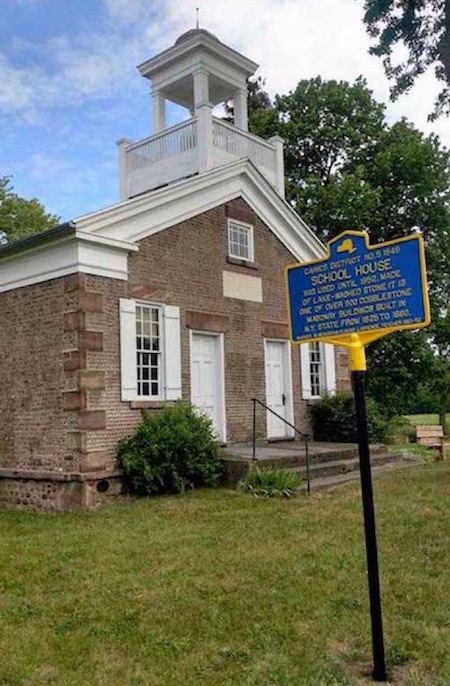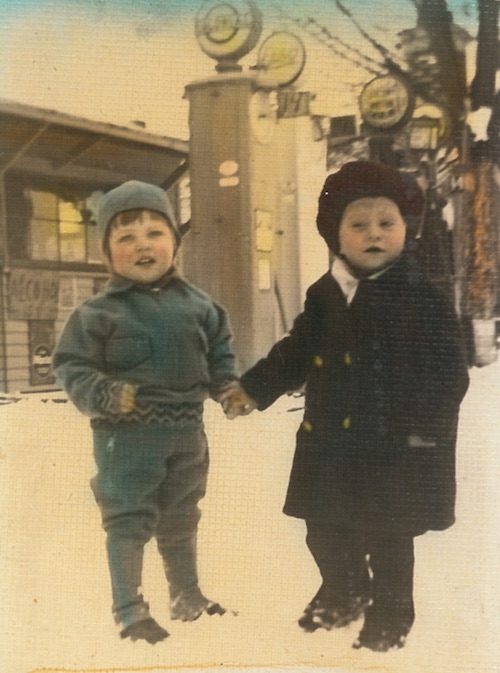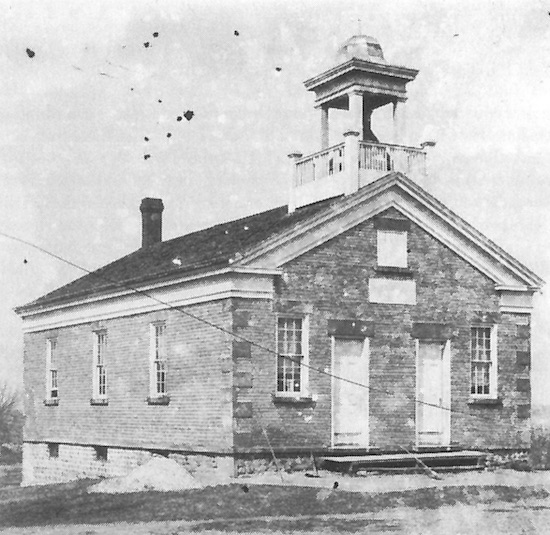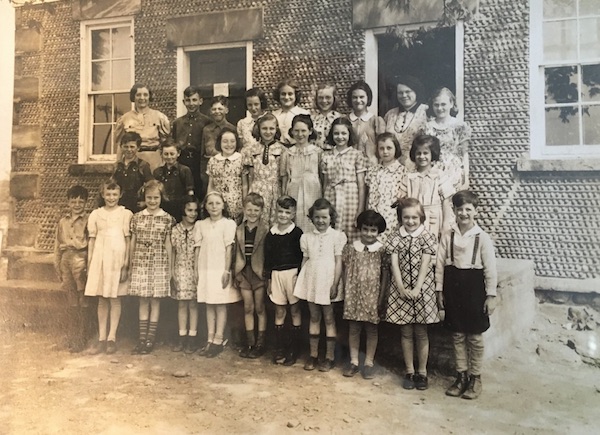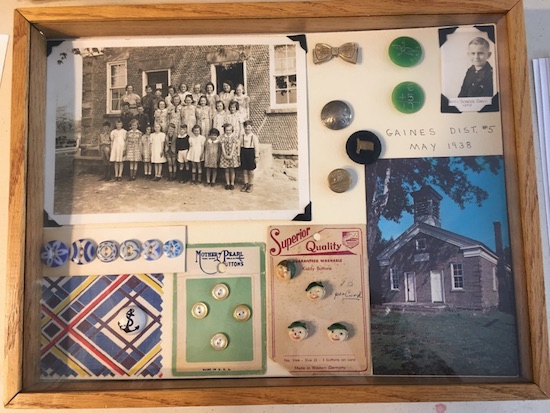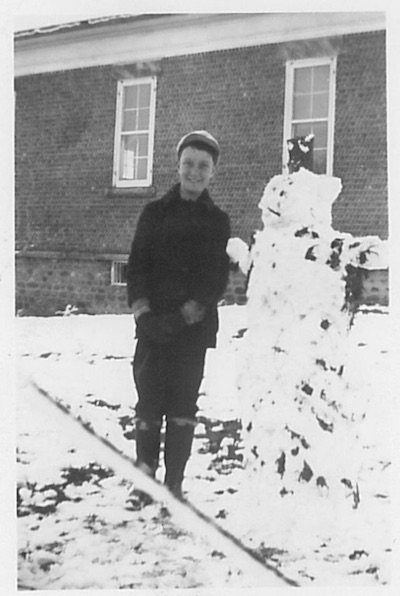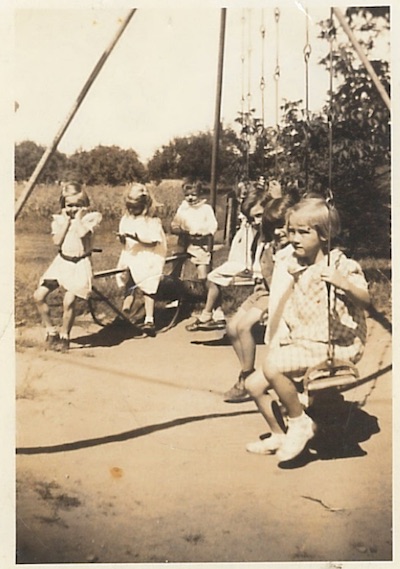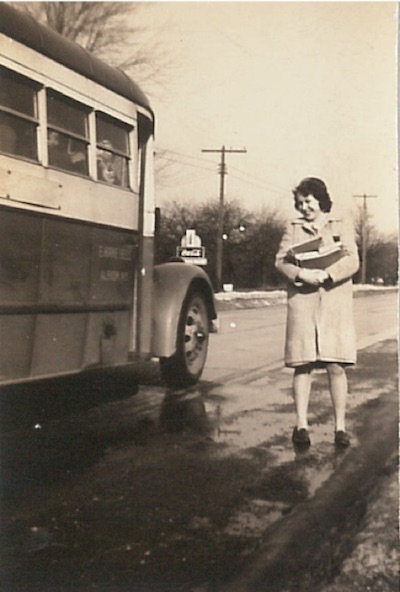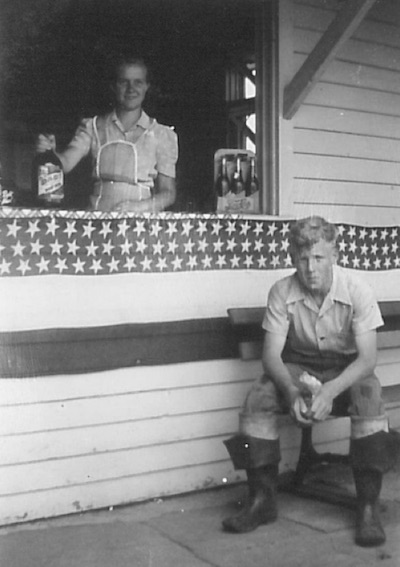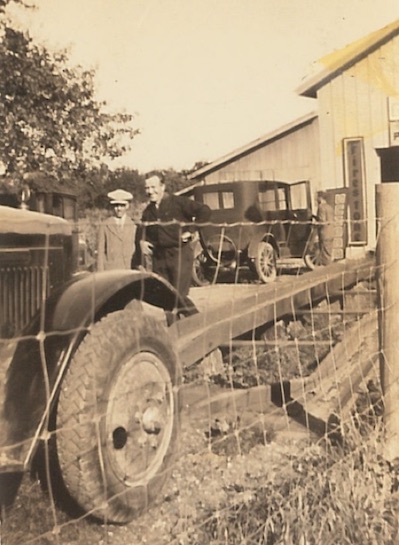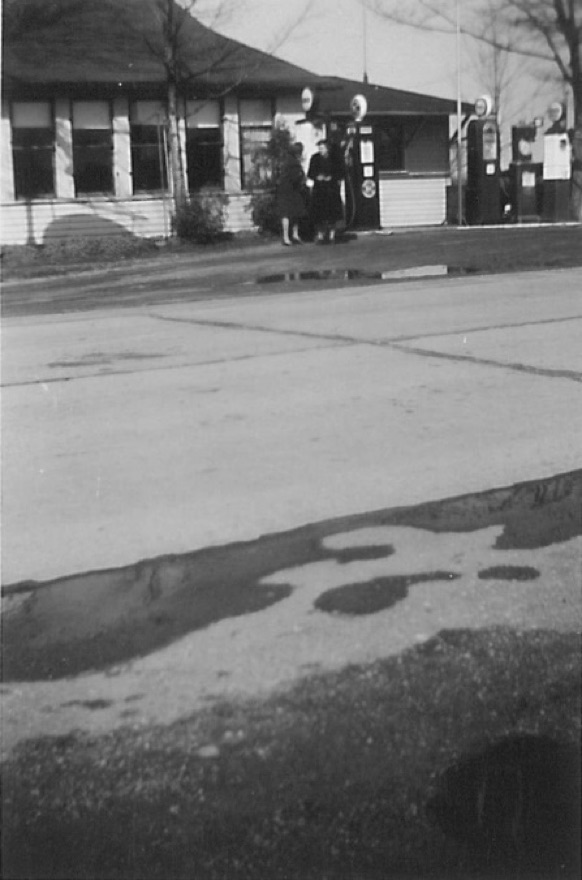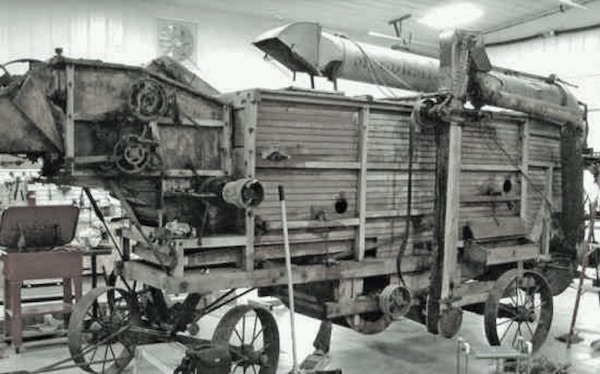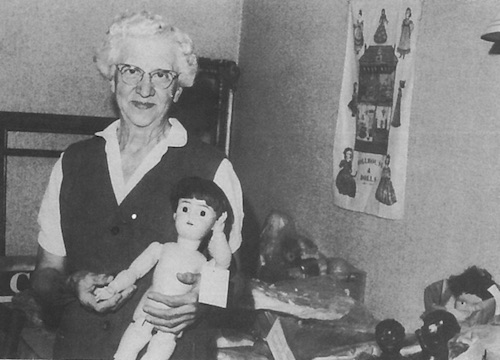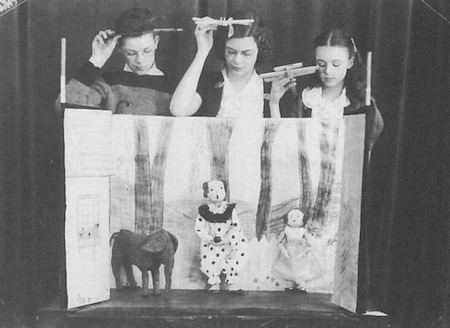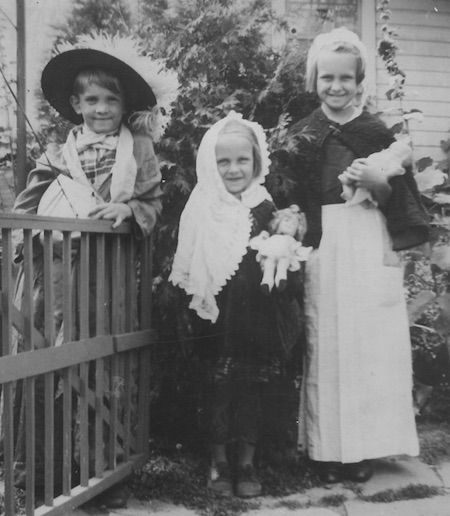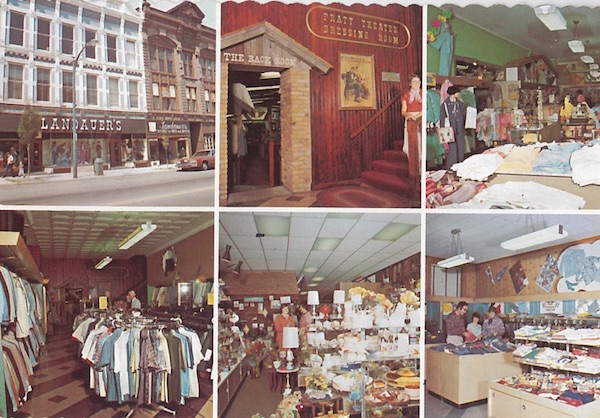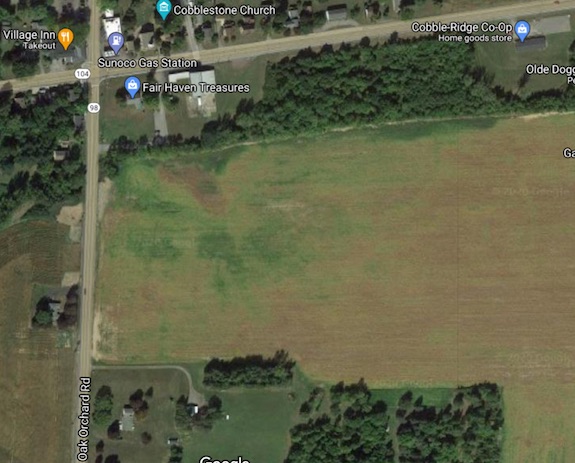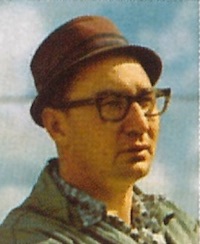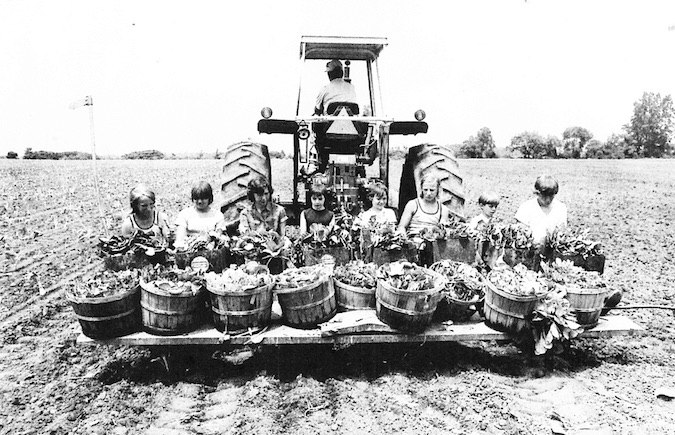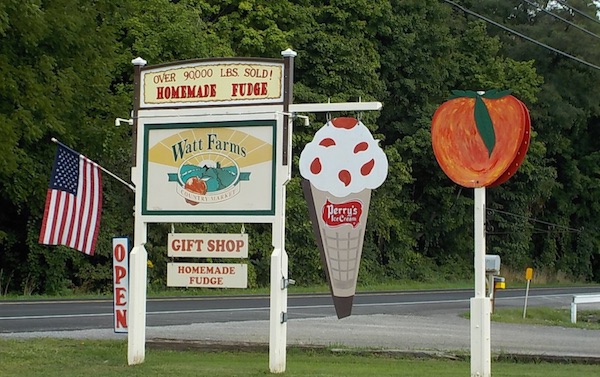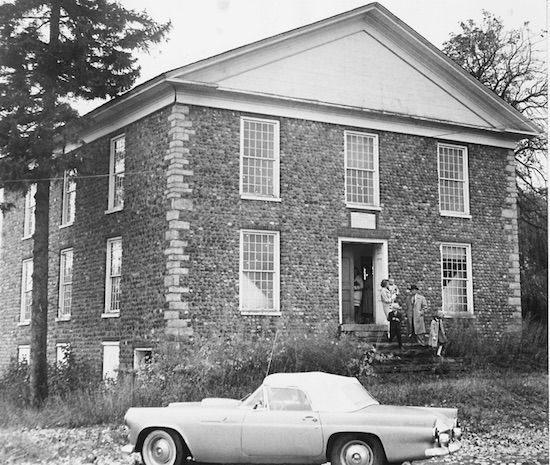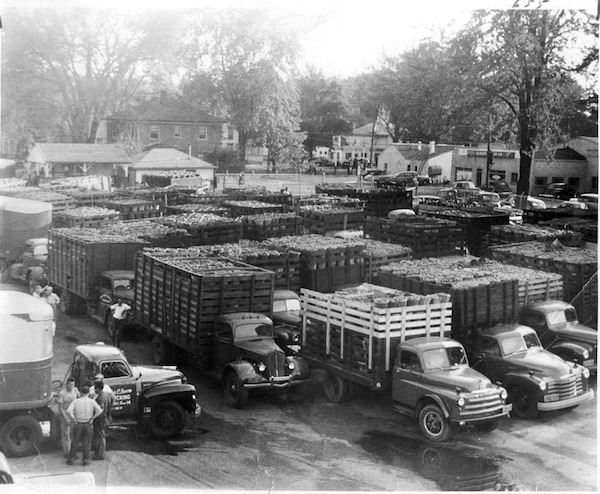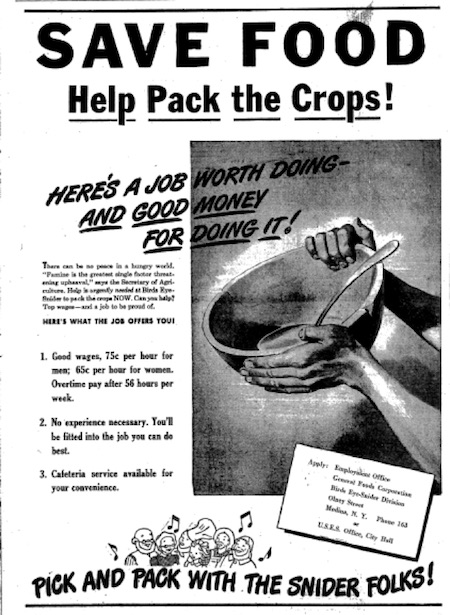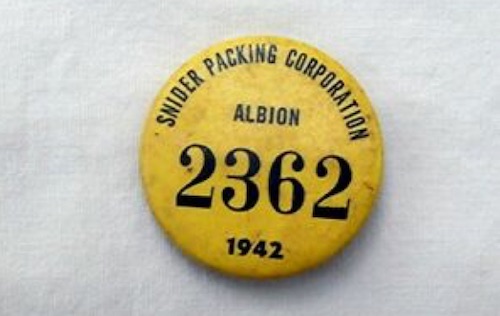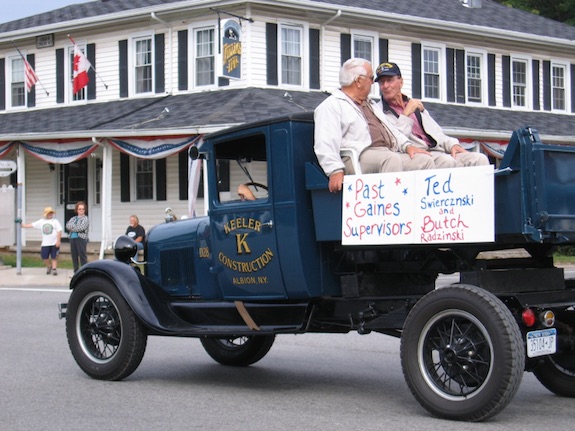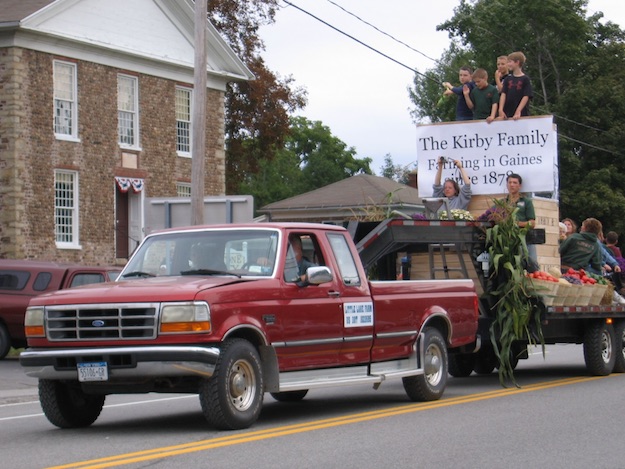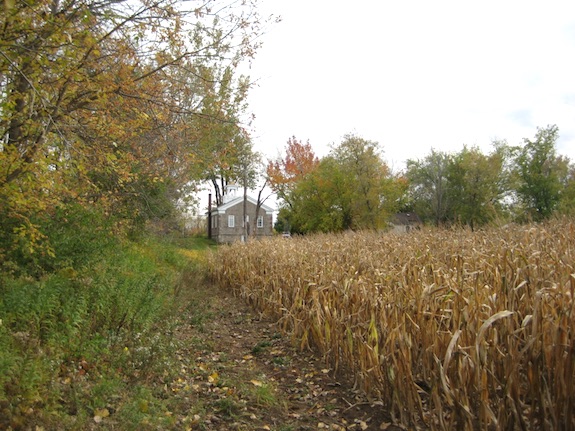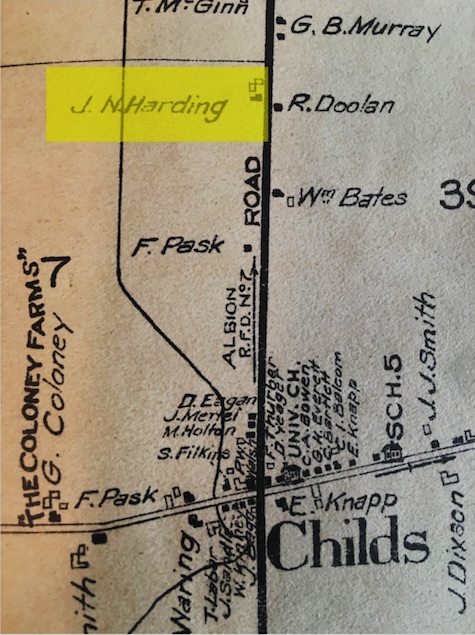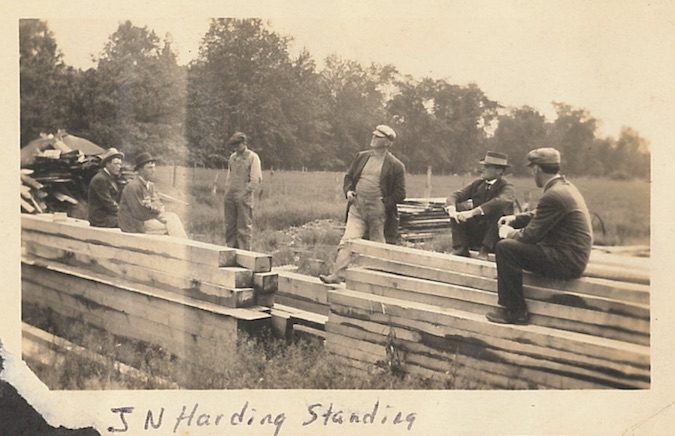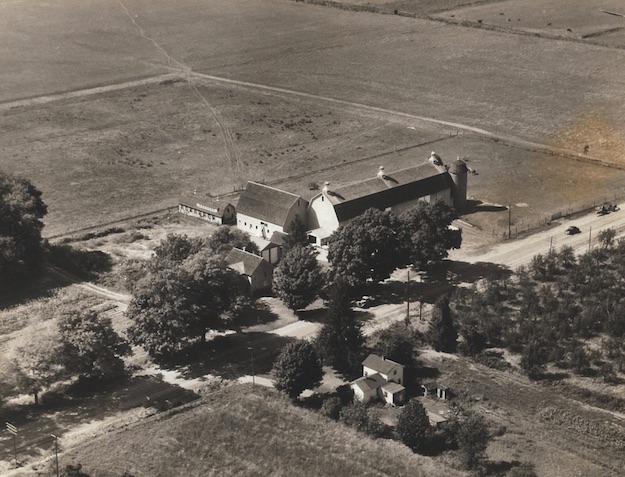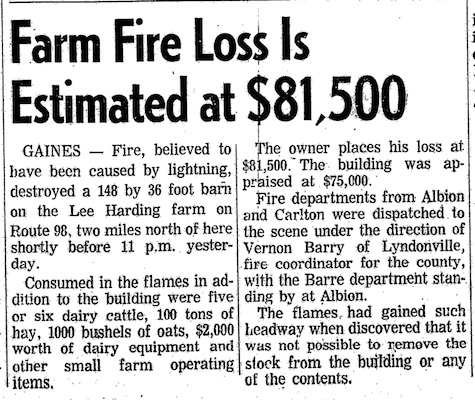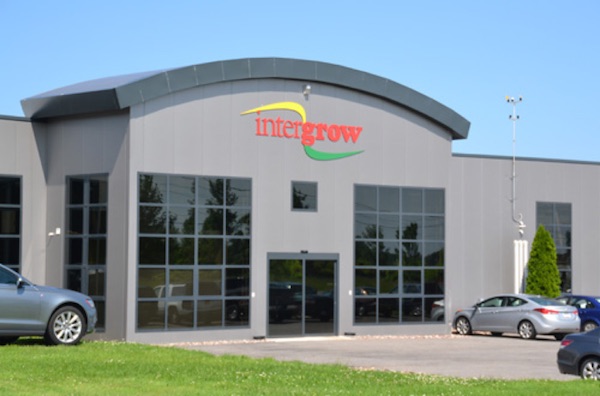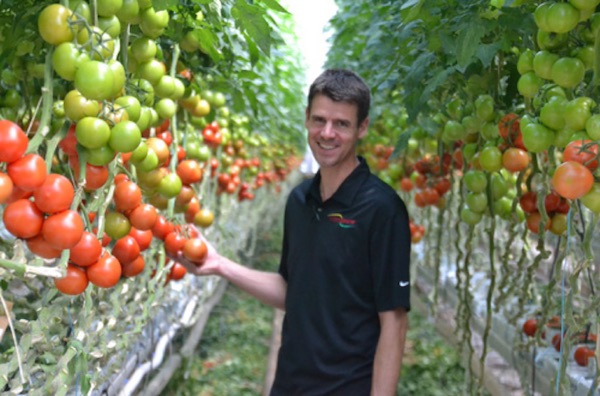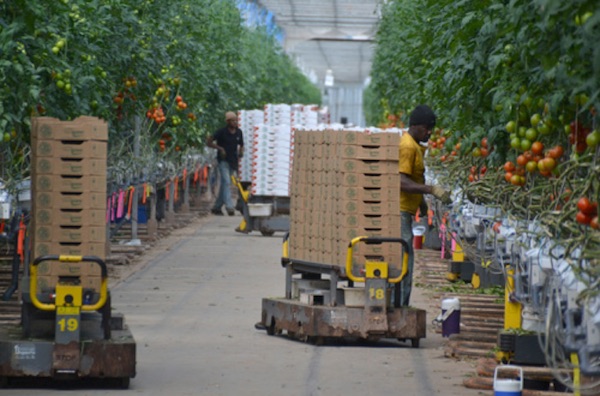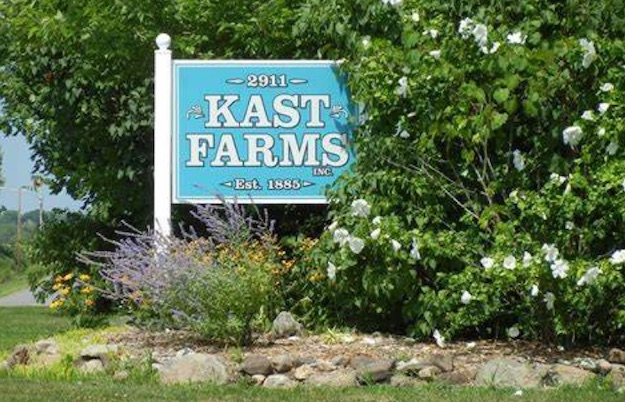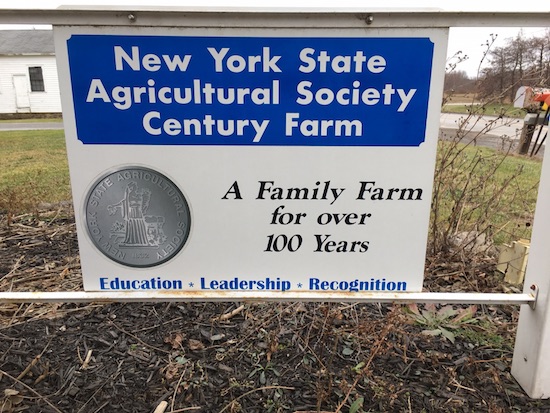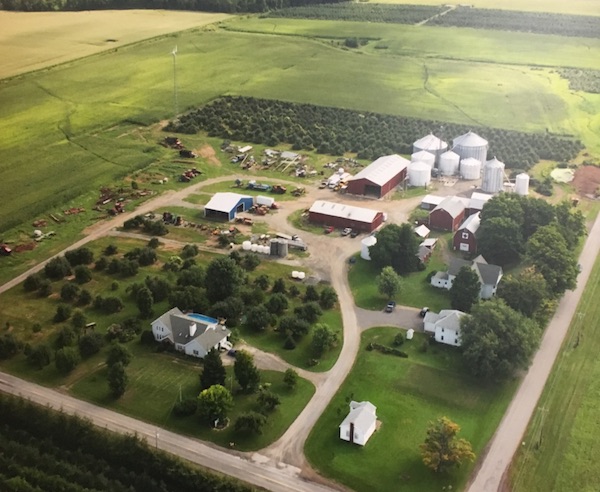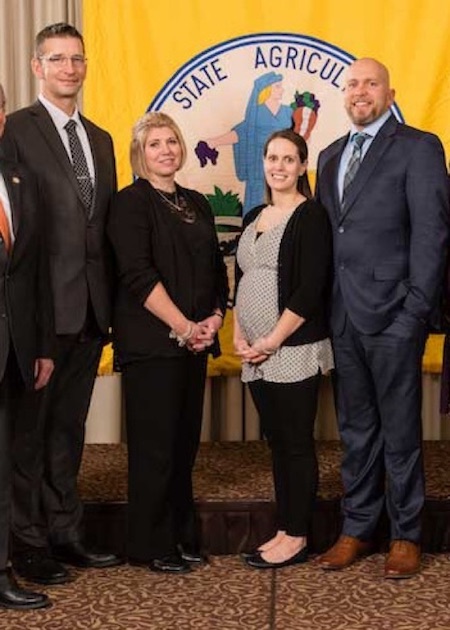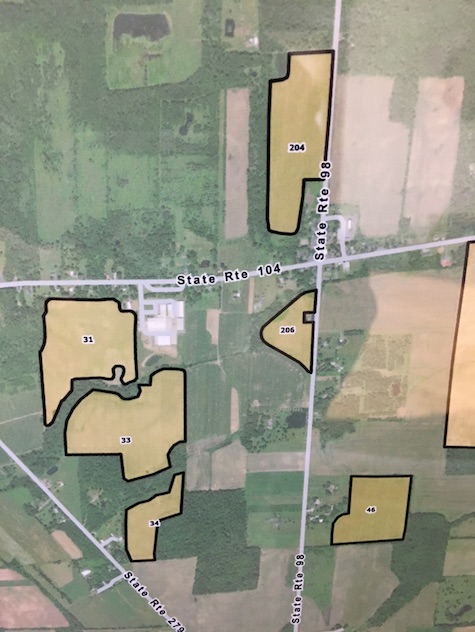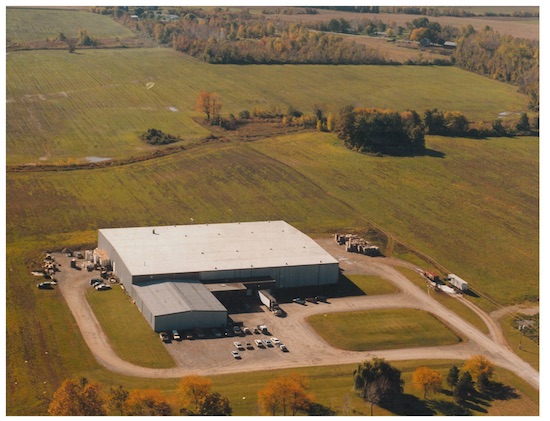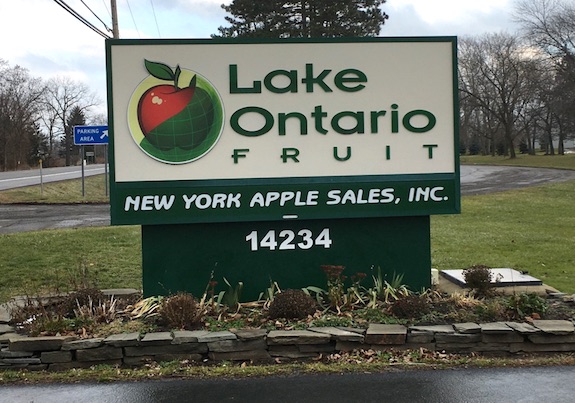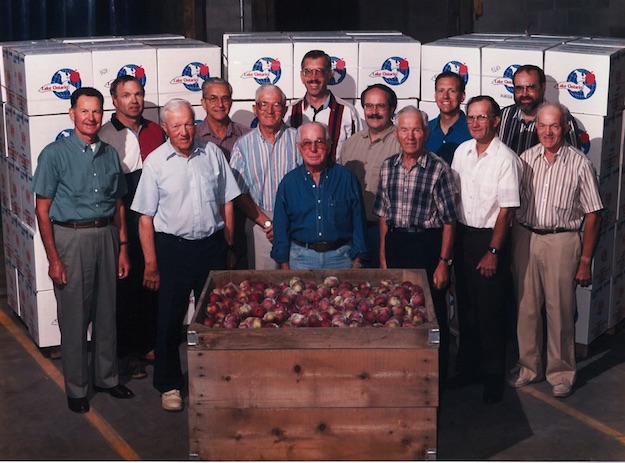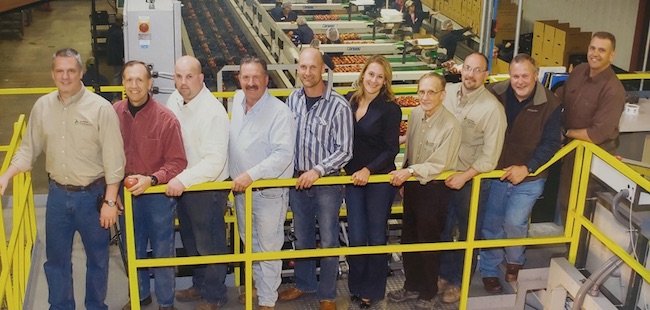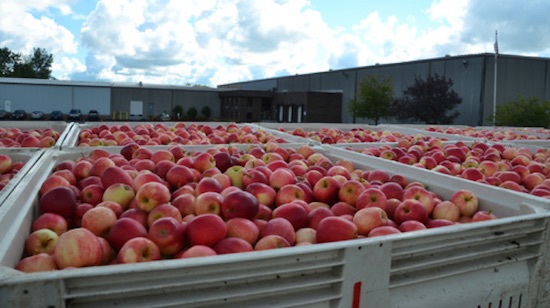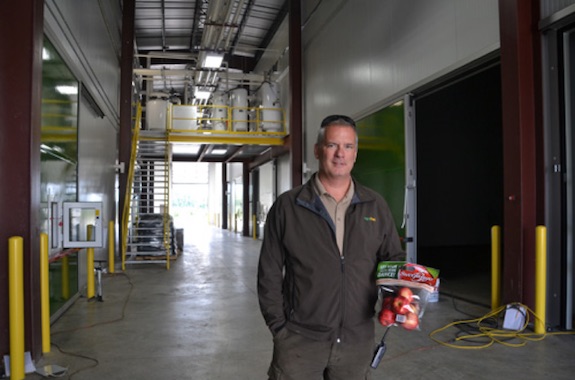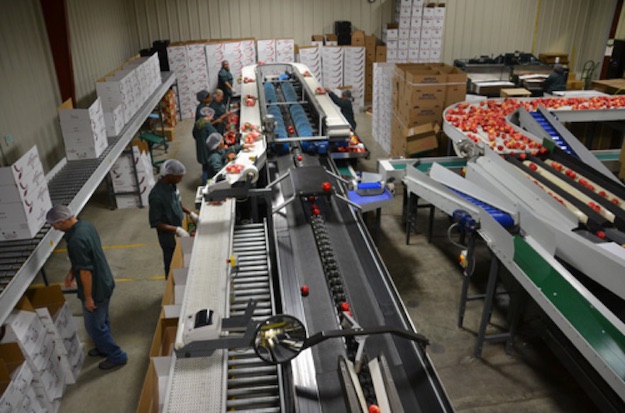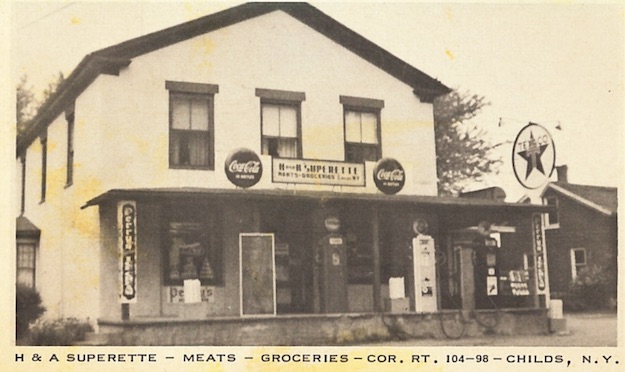
By Doug Farley, Cobblestone Museum Director
GAINES – Every community is enhanced by the presence of a grocery store providing the basic essentials for its residents. Throughout the 20th century, that presence was found in the hamlet of Childs in the H&A Superette. This longstanding enterprise owed its existence to Henry & Agnes Radzinski who were, of course, the namesake “H” and “A” in H&A Superette.
Their story begins in 1950 when Henry and Agnes purchased the former Balcom Brothers market at the intersection of Routes 104 and 98 in Childs. Ortis and Walter Balcom’s enterprise in Childs went back deep into the early history of Childs, and set the stage for the presence of a community store at that location that continues even to this day.
In reality, the Radzinski family’s mercantile experience goes back much earlier than 1950. Agnes (Daniels) Radzinski’s father, Adam Daniels, operated Daniels Provisions, a meat business that was located at 337 Caroline Street in Albion. Henry, and later his son Ron, born in 1934, trained in meat cutting at Daniels, a skill that would carry them both forward to form the basis of their own successful business together. Henry, was one of twelve children, which certainly provided him with a strong work ethic.
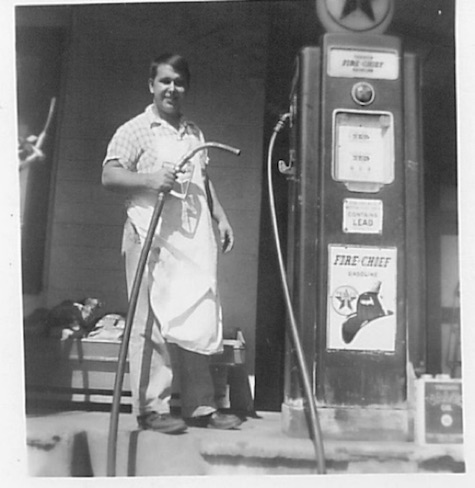
The H&A operated for its first decade in what family members now call the “old store.” It was similar to Balcom’s, but with a change in merchandising to create a “self-service” grocery store with an emphasis on fresh cut meats. Ron Radzinski is seen here pumping Texaco gas from the front porch of the old store.
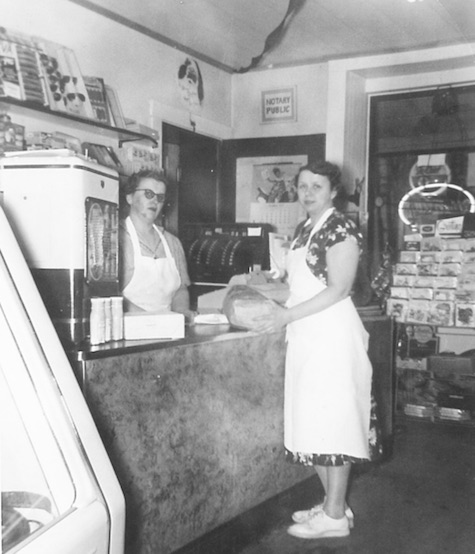
Agnes Radzinski is behind the counter at the old store with her sister, Gertrude Kaniecki. At the time the old store was torn down, it was discovered that it actually had cobblestone walls. Historian Bill Lattin recalls, “Hank got in touch with me and told me to come see the discovery.” The old cobblestone walls had been covered with stucco at some point in the buildings early history. Bill said, “Henry felt bad but it was too late to save it.”
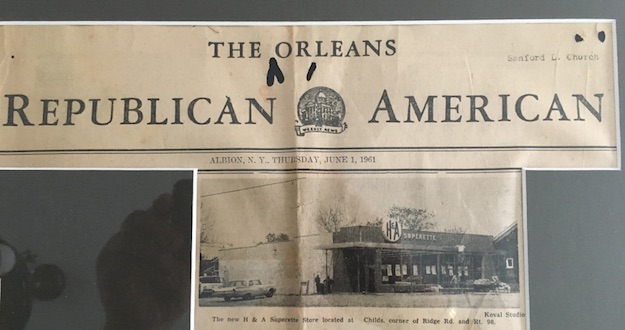
In 1961, after ten years of operation, the Radzinski’s reinvested into their business, to create what became known as the “new store.” The transition was nothing less than amazing. The change essentially involved building a new one-story building behind the earlier store, and then removing the old two-story building.
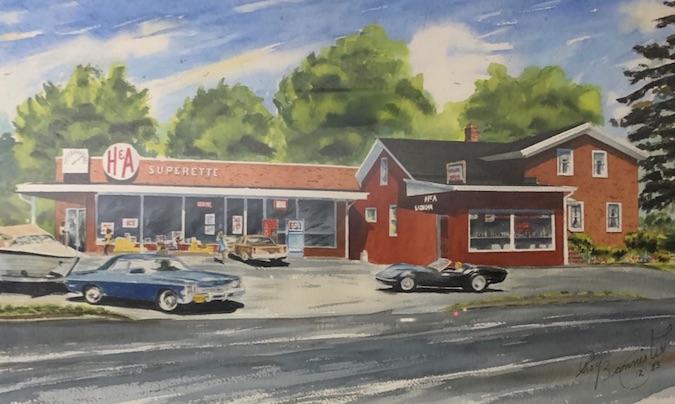
Painting by Roy Bannister of Carlton, 1983
The new store was built with concrete block construction with large glass windows in the front. The inside was painted in pastel shades of peach and green. A large meat case extended across the end of the store. A frozen food section and produce coolers ran along the sides. Besides groceries and meat, the store was well equipped with hardware, clothing and other necessities. The Radzinskis really wanted to provide a “one-stop” shopping experience in Childs.
Local contractors involved with the construction of the new store included Grillo & LaMartina, Ralph’s Plumbing & Heating, Canham Electric, Donald Rorick, Docks’ Flooring, Richard Shepard, and Maine Lumber.
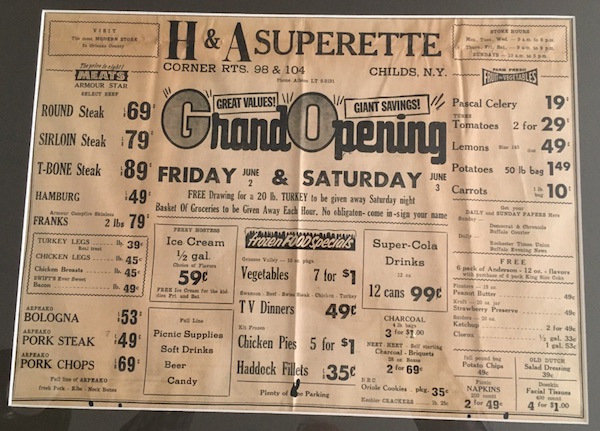
The official grand opening of the new store took place on June 1, 1961 as demonstrated by the newspaper ad as shown above. The new store had two cash registers, several aisles of grocery staples, a full service meat department, produce, as well as beer and cigarettes. The store purchased local whenever possible, including a longstanding arrangement with Bob Kelsey of Carlton to provide local fresh strawberries in season.
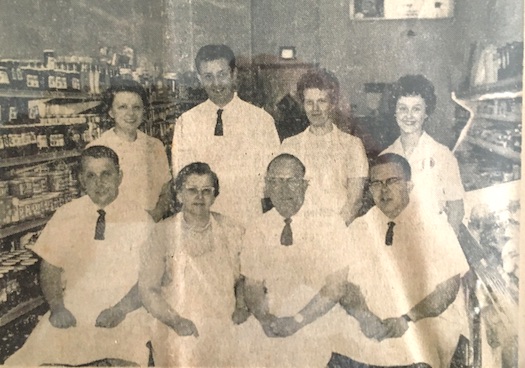
The grand opening staff, shown here in 1961 in their grocers’ white aprons, proudly recall that the store suffered no down time in the transition. One store or the other was open every day during the changeover. Bottom row: Ronald Radzinski, Agnes and Henry (Hank) Radzinski, and Daniel Radzinski. Back row: Gertrude Kaniecki and her son Roger Kaniecki, Pauline Radzinski and Marilyn Mack. Ronald and Daniel are sons of Mr. and Mrs. Henry Radzinski.
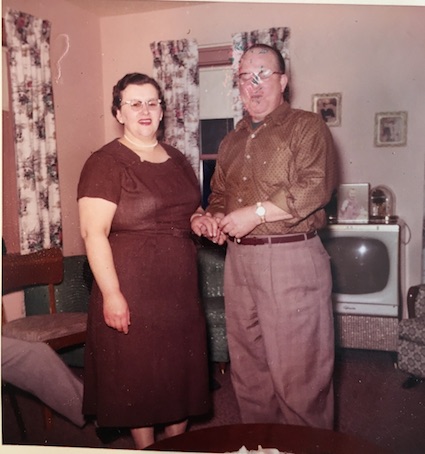
Henry and Agnes, seen here in 1959 on their 25th anniversary, transferred ownership of the store to their sons Ronald (Butch) and Danny in 1986. Ron continued to run the store until 1999. The H&A grew in popularity, largely due to the friendly neighborhood service it provided. A culture of service was the hallmark demonstrated by every member of the team that worked there.
The Radzinski family loomed large in the enterprise. In addition to Henry & Agnes, other family members included son Ron who cut meats, Ron’s son Mark who was taught to make Polish and Italian sausage, and Ron’s daughter Gayle who served as cashier. Ron’s wife, Pauline, though she was a career nurse, was sometimes seen running cash register when others were not available. The family connections at the H&A went on to include sons, sisters, brothers, grandchildren, nieces, nephews and more.
Anyone familiar with a “mom and pop” grocery store can attest to the fact that everyone in its employ has to learn to be a “jack-of-all-trades.” If not trimming produce or cutting meats, any employee may be called on to unload truck, stock shelves, run cash register, clean floors, shovel snow, and on-and-on.
Ron (Butch) Radzinski worked about 50 years in the grocery business. He only left it for about two years for military service in Germany after WWII. He built up a reputation as a friend to everyone that crossed his path. He even extended credit to his customers, if they needed it. He made sure no one went without. During and following his many years in business, Ron served as Town of Gaines Councilman, then Town Supervisor, and eventually Orleans County Legislator, where he served as Vice Chairman. Sadly, Ron passed away in 2020.
Mark Radzinski, born in 1959, got started working around his grandparents’ store as a young child, stocking shelves, cleaning up, and many other tasks. At age 16, he got an actual “job” at the store, even though he didn’t have an official paycheck to show for it, because, he said, “My Dad paid me cash.” He left the store for two years to attend college and then returned and worked at the H&A until 1999 when it closed.
Mark recalled, “My grandfather taught me to make sausage. Every year at Christmas I would make about 800 pounds of sausage for the holidays.” Following his years as a grocer, Mark worked for the Orleans County Highway Department for a year, followed by working for the Town of Gaines Highway Department, where he currently serves as Highway Superintendent.
Ron and Pauline’s daughter Gayle (Radzinski) Ashbery, born in 1958, worked in the store growing up, and then followed her father’s footsteps into public service, becoming, first, a Town of Carlton Councilmember and currently serving as Town Supervisor. Gayle recalled, “I worked at the store as a cashier, but also stocked shelves and swept the floor. The favorite memory I have is just talking to people and enjoying their company.”
Talking to people seemed to be what made the store so successful. It was the personal interactions between staff and customer that made the store a friendly place where folks enjoyed shopping and catching up on the latest news of the day. Former Cobblestone Museum Curator Bill Lattin offered, “You couldn’t ask for a better neighbor than the H&A and the Radzinski family.”
Bill recalled that on more than one occasion, Ron Radzinski went out of his way to help the Cobblestone Museum in its historic preservation mission. Bill said, “Ron tipped the balance and helped the museum acquire the brick bulding which had originally been part of the H&A property for many years.”
Both Mark and Gayle reflected on the many sights, sounds, and smells that provided customers a sensory experience in addition to a shopping experience at the H&A. Gayle said, “Agnes had a kitchen in the store and she always made lunch for the workers. I still remember the boiled hotdogs. Somehow, they tasted better then.”
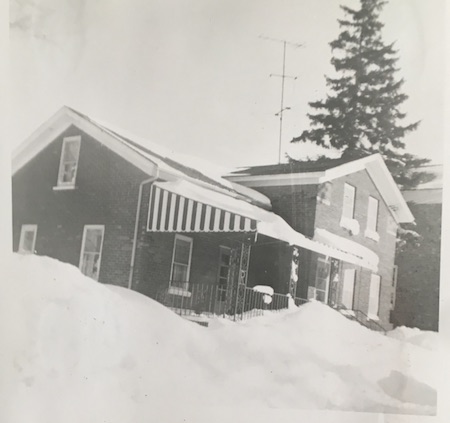
The H&A owned the neighboring brick house, built in 1836, seen here in the 1950s. Ron and Pauline Radzinski used the house as their residence from 1957 to 1965, at which time they built a new house on Oak Orchard Road in Childs. Following that period, Henry and Agnes moved into the house. Its proximity to the store must have been a mixed blessing, close to the store when attention was needed, and conversely creating a 24-hour, 365 days a year, on-call situation when troubles developed.
Gayle Ashbery, on a recent visit to the brick house remarked, “This is the wall that Mark and I scribbled on with crayon as kids. I think my parents must have forgiven us by now.”
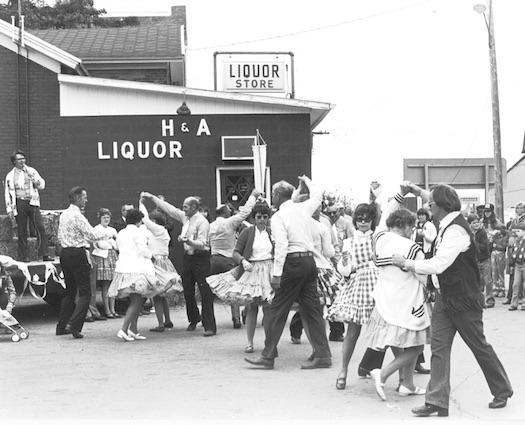
In later decades, the Radzinski’s remodeled the brick house, removing the porch and awning and building an addition at the front of the building seen here. With this addition, they opened the H&A Liquor store, as an adjunct to their successful superette. The photo shows a square dance in the H&A parking lot for the “Farmers’ Parade” in 1980.

The H&A legacy came to an end in 1998 when the business was sold to Dennis Piedmonte, who removed 18 feet from the front of the building and changed the format to a convenience store. The downsized market was known as “JP One”, and a second store opened later in Holley that was called “JP Two.” The store in Childs is currently operating as part of the “Crosby’s” chain.
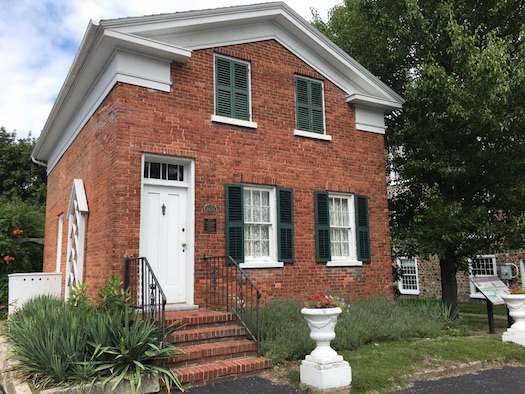
The Brick House (1836) became part of the Cobblestone Museum in 1998, after Ron Radzinski agreed to save the historic structure from the wrecking ball. The museum removed the liquor store and side addition, returning the building to its original 1836 configuration. Currently, the Museum’s office and Resource Room are located here.
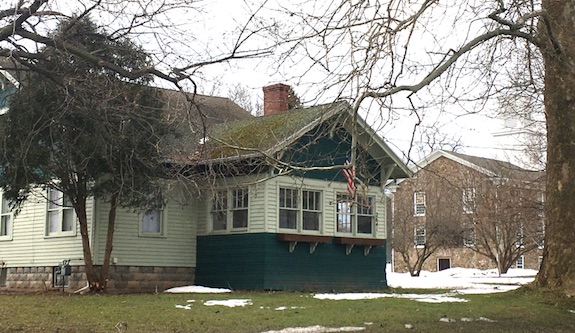
In another family connection to Childs, Mark Radzinski and his wife Brenda, purchased the wood framed house directly behind the H&A as their first residence, early in their marriage in 1986. The young couple lived in that home until 2000, when they purchased a residence on Oak Orchard Road in Childs, near the home of Mark’s parents. Later, the Cobblestone Museum purchased the house, as seen here behind the Cobblestone Church, to provide rental income, additional museum parking and access to Route 98.
Mark Radzinski and his sister, Gayle, offered their thanks to many of the longtime employees at the H&A who went “over and above” to make the store a treasured community staple over the years. They thanked everyone, and specifically mentioned Gert (Daniels) Kaniecki, cashier; Jim and Bob Wells, who cut meat and made deliveries; and Patty Avino, cashier.
Also, they thanked the many, many customers that patronized the store for decades that made it all possible.




















